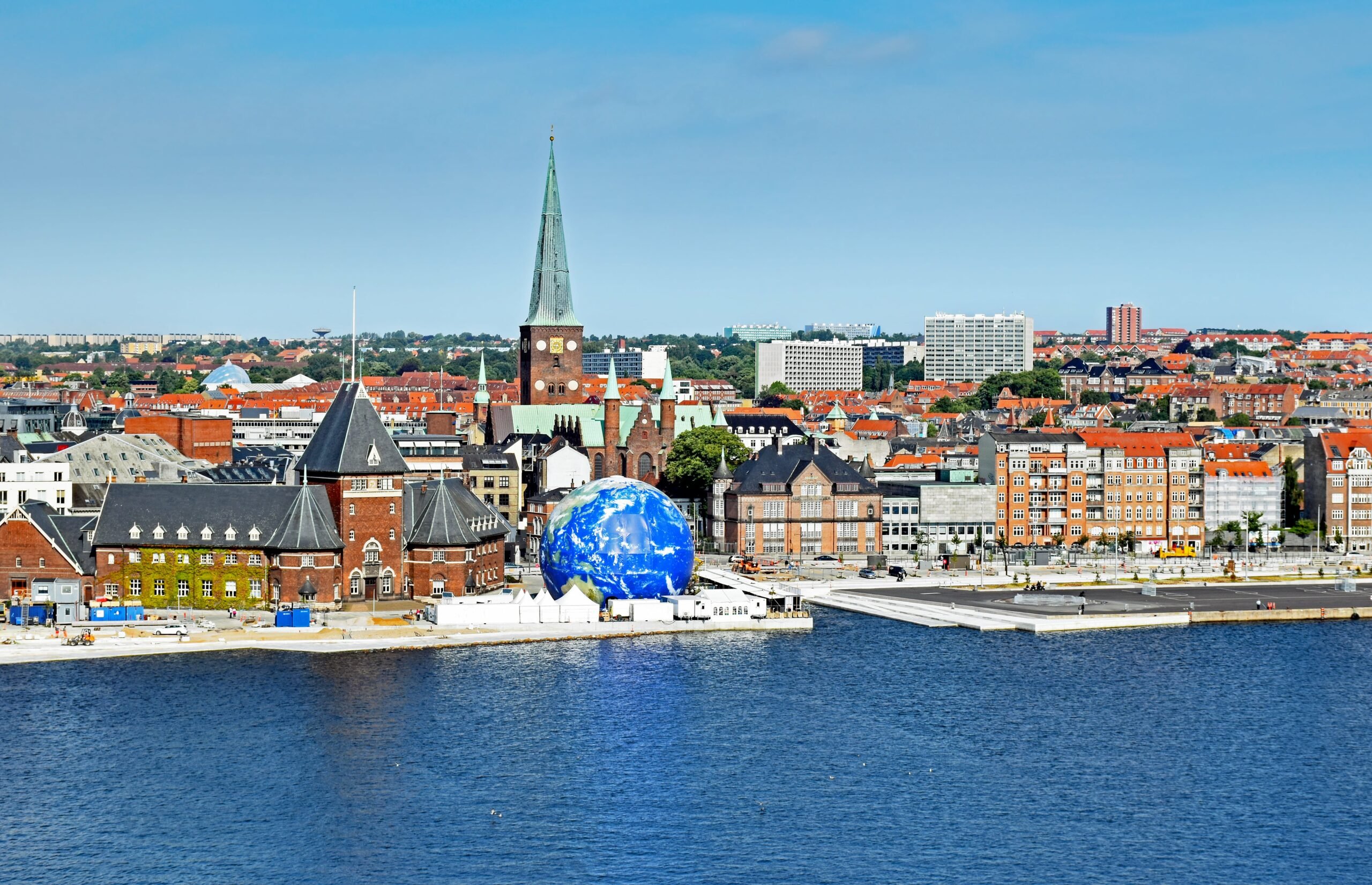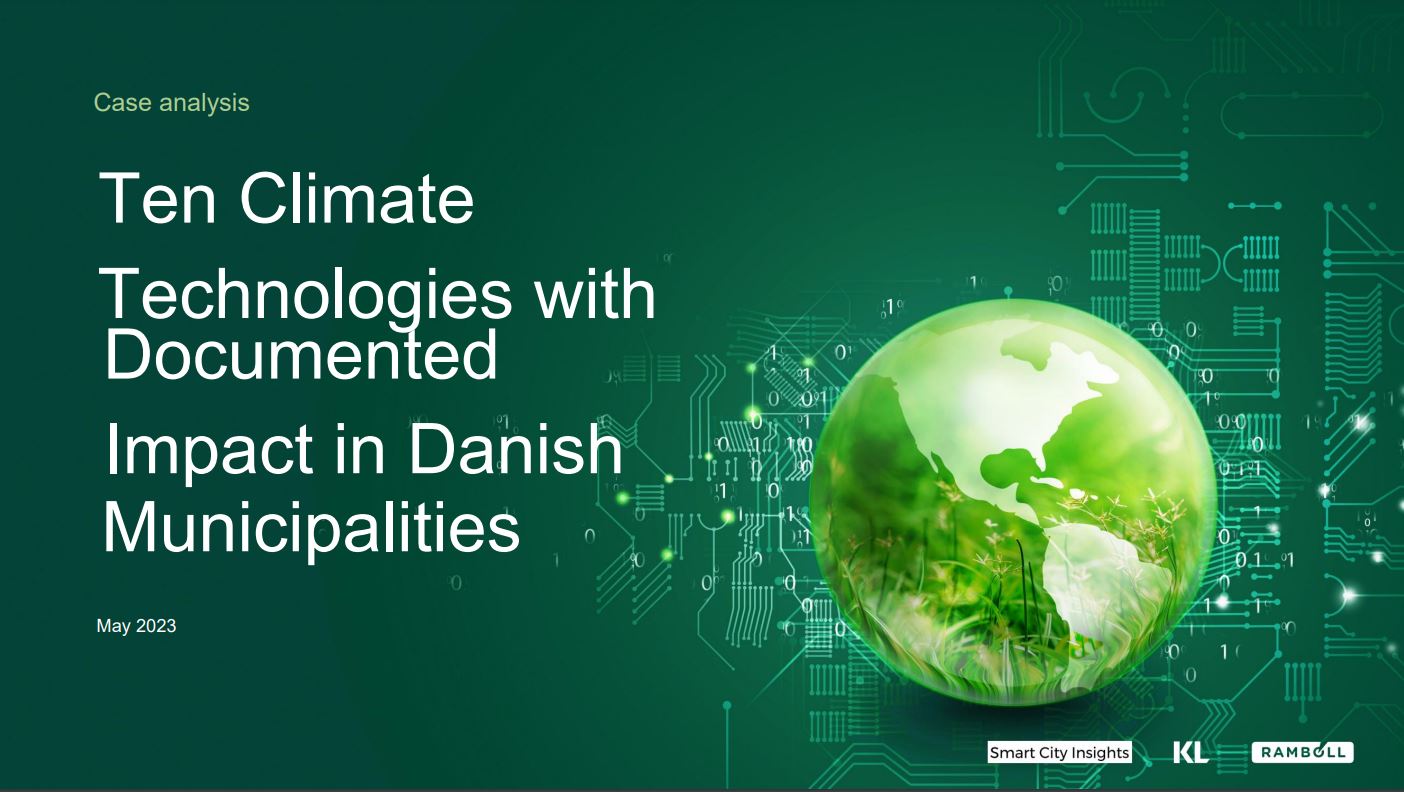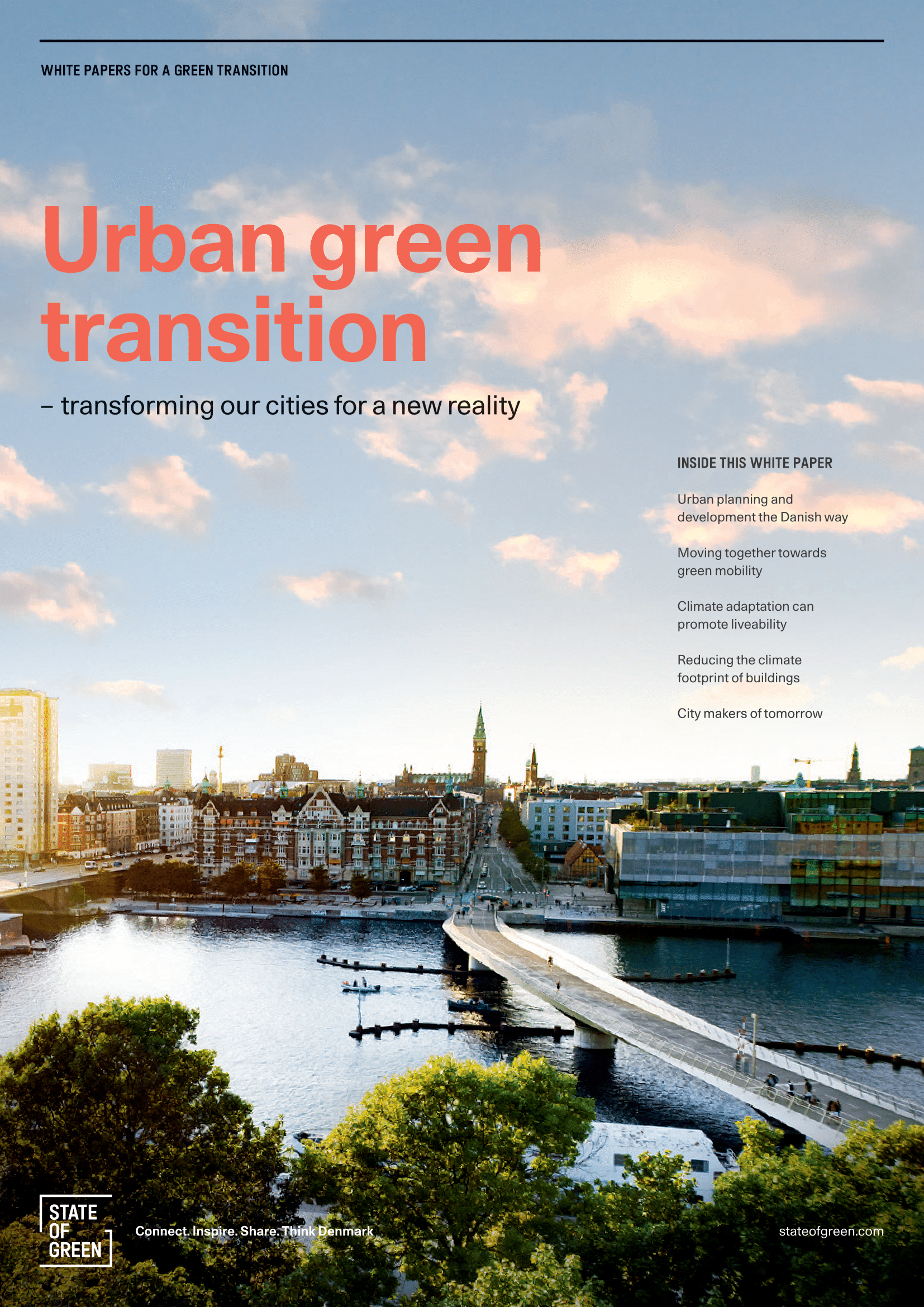About the report
The analysis was conducted by Smart City Insights and Rambøll Management in close collaboration with Local Government Denmark (KL) and the Danish municipalities themselves.
Read the full reportNews
Smart cities
Air pollution
Buildings
+15



The analysis was conducted by Smart City Insights and Rambøll Management in close collaboration with Local Government Denmark (KL) and the Danish municipalities themselves.
Read the full reportIn the city of Aarhus, the AI tool FleetOptimiser is used to determine the actual need for a car fleet. The tool has been used in the home care area, which showed that a reduction of 13 cars out of 43 in total was possible without changing the driving patterns. The new leasing agreement included the reduction, which will save 49.4 tons of CO2 over the coming five years. The AI tool can also be used to estimate the right mix of bicycles, electric cars and fossil-fuel cars and thereby ensure optimal utilisation. The city of Aarhus is working together with other Danish municipalities to further develop the AI tool so it can be used to estimate the right mix of transport and establish fleet sharing across internal organisational units in the municipalities.
Taarnby Municipality has implemented a plug-and-play solution that can be installed on all buildings with a CTS (Central Condition Control and Management). The solution uses AI and weather forecasts to automatically control heat consumption. The automatic forecast control calculations are based on the temperature in buildings and weather conditions to determine the supply temperature. It saves Taarnby Municipality 365 tons of CO2 per year, equal to a 15 percent reduction in heat consumption. Furthermore, the solution ensures a better indoor climate as it is possible to keep a constant temperature and monitor the humidity.
In less than three years, Hoersholm Municipality has saved 6 percent of their total annual energy consumption after implementing computerised energy management. The solution from Ento Labs was installed in all municipal buildings and provided an hourly overview of all energy data. Subsequently, a number of energy-saving initiatives have been installed based on the collected data and information. The solution itself does not provide CO2 savings, but is an energy management tool. The savings can be achieved by acting on the suggestions for improvements provided by the system.
The city of Aarhus uses a combination of smart IoT sensors to increase the efficiency of investments in its drainage system. The solution enables real-time monitoring, which makes it possible to act proactively instead of reactively on potential problems. The observation data gathered provides a better opportunity to identify problems and real capacity in the drainage systems, so that investments can be prioritised for maximum impact. The solution is expected to provide a 10-20 percent increased effect of investments, preferably within climate adaptation, renovation and sanitation of the overall rainwater and wastewater system.
Svendborg Municipality is located on the coast, making it vulnerable to rising seawater and cloudbursts. Therefore, the city used a digital damage calculator to map out the risk and the expected cost of flooding. The damage calculator is an open-source, free-to-use product offered by the public organisation Geo Fyn. The calculations can be used for risk mapping that works as a starting point for assessing investments in climate adaptation. Using the calculator, Svendborg Municipality has reduced the annual damage risk by 750,000 EUR.
In the city of Copenhagen the Health and Care Administration’s 10,000 employees operate more than 6,000 mobile devices, but the administration needed a fixed procedure for defective devices. To maximise the recycling of defective devices, the “Device Lifecycle” method was introduced. The method uses a Mobile Device Management app that tracks whether the device is in use to ensure that all devices are actively used. This resulted in 1,200 devices being returned that had never been used, corresponding to a reduction of 78 tons of CO2.
Gladsaxe Municipality has implemented a digital platform solution from FoodOp that uses digital scales to show food waste in various municipal operations. It is often a challenge when aiming to reduce food waste, it is not known where the food waste occurs. This solution enables the kitchen to build profiles for the selected operations and show the extent of food waste and the CO2 footprint from the menu. After implementing the solution, Gladsaxe Municipality has seen a 30 percent reduction in food waste in one of the selected operations.
In the city of Aarhus an internal tax system has been introduced on selected foods to create incentives for climate-friendly purchasing patterns. After the tax is collected, it is sent back to the individual purchasing units in the municipality. The solution has only been implemented for three months but has already resulted in a 40% reduction of the beef consumption and a 12 percent reduction of the CO2 load from food purchasing.
Haderslev Municipality has invested in dynamic light control for their roads, to prevent light pollution as the lights are controlled regarding the activity on the roads. The dynamic street lighting is controlled with motion sensors and provides real-time information status of the lamps. The replacement started in 2015 and there has been an 82 percent reduction in KW/h across the municipality since then, with savings as high as 97 percent in smaller towns. The solution requires close cooperation with the energy companies to ensure economic profit, as it is a large investment.
In Varde Municipality intelligent waste containers have been installed as it has been a logistical challenge to keep track of when the individual containers had to be emptied. The implementation of Nordsense’s solution now optimises emptying runs. The municipality receives regular reports and an automatic message when a container is 70 percent full so that the route can be completed in one working day, saving both money and CO2. Furthermore, the solution improves the citizens’ experience as the containers are rarely overfilled.
Read the full report: Ten climate technologies with documented impact in Danish municipalities

This white paper demonstrates why holistic and strategic city planning and development within mobility and infrastructure, climate adaptation, as well as environmentally conscious architecture and construction, must take centre stage in the transformed cities of tomorrow.
White paper: Urban green transitionsolutions
Urban infrastructure planning
+2
publications
Combined heat and power production
+9